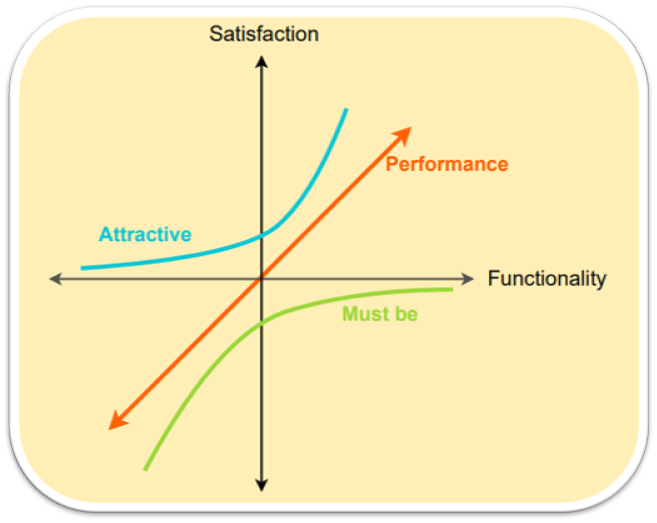When developing a new product or adding fresh features to an existing one, it's crucial to understand what our customers want and need. Whether the product is for an internal team or external users, the question remains the same - what features should we develop to satisfy our customers?
Many organizations use popular frameworks to determine which features to develop and their priority. If you aren't using one, don't fret! Validating the "want" is essential, and I'd recommend choosing a framework that suits your situation best.
Today, I'll explain a framework I've used extensively while working with product teams: the Kano Model.
What is the Kano Model?
The Kano Model is all about understanding customer satisfaction concerning product features and services. Customers are sent a questionnaire, and based on their responses, features are sorted into five categories:
- Must-be: Features customers expect a product or service to have. For example: a cell phone should be able to send messages.
- Performance: Features that add to customers' enjoyment of the product. For example: a cell phone with more RAM and CPU power to stream videos online.
- Attractive: Features that delight customers and give you an edge over competitors. For example: a bigger screen.
- Indifferent: Features that customers consider neither good nor bad. For example: the size of the camera on the back of your cell phone.
- Reverse: Features that can cause dissatisfaction. For example: a company logo that pops up when your cell phone starts.
These five categories are mapped on a scale of functionality (x-axis) and customer satisfaction (y-axis), as shown below:

To reiterate, the Kano Model is used to analyze how features relate to customer satisfaction. Some questions that the Kano Model can help answer:
- Do our current features have high customer satisfaction?
- What features can we introduce to boost customer satisfaction?
- What features can give us an advantage against competitors in terms of customer satisfaction?
- What are the must-have features for our customers?
Why would we want to use the Kano Model?
In my experience, as technology and information grow, we need to keep asking ourselves what our customers want. We should always listen to our customers, understand their perspective, and evolve our products, not just for today, but for the future as well. That's where the Kano Model swoops in to help:
- Save time and money.
- Identify key features.
- Improve customer satisfaction for both new and current products.
All that being said, we haven't touched on the most crucial aspect of this model: building the questionnaire. To generate accurate insights from customer responses, it's critical to ask questions that are easy to comprehend and answer. The Kano Model suggests asking customers three types of questions:

Functional: How do you feel if you have this feature?
Dysfunctional: How do you feel if you do not have this feature?
The Kano Model works wonders for startups, but I've also collaborated with PM teams in large organizations where they've used this model to enhance customer satisfaction. If you're intrigued and want to read more, check out the Kano Model Wiki and this article on Kano Analysis.